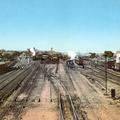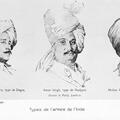Commercial Street, Bangalore
A popular image of Commercial Street in Bangalore by one of its most popular studios run by M. C. H. Doveton. Note that the poster on the left has the word "War" readable which suggests it is from around the first World War I period.










